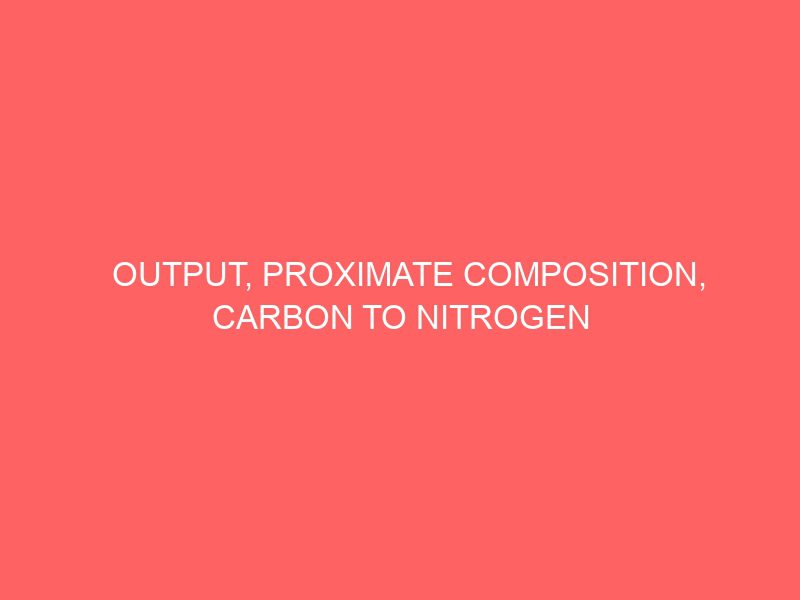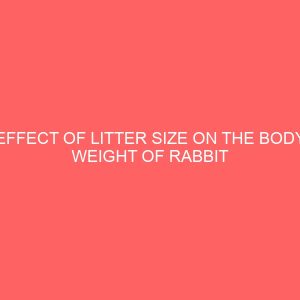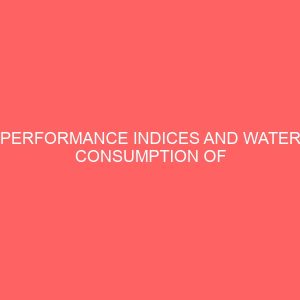Description
Studies were carried out to examine the output, proximate composition, carbon to nitrogen ratio and energy value of poultry litter. Excreta was collected from broiler chicken and caged layers. Excreta collected was subjected to gross chemical analysis and gross energy determination. The results showed the output of broilers to be 154g per bird per day while that of layer was 86.5g.Result obtained from the proximate analysis of the broiler and layer litters showed that broiler litter had a moisture content of 31.79% (68.1% dry matter), 10.06% crude protein, 6.1% ether extract, 16.62% crude fibre, 18% ash and 15.90% nitrogen free extract whereas layer litter had 29.06% moisture content (70.94% dry matter), 8.54% crude protein, 5.5% ether extract, 12.5% crude fibre, 23.75% ash, 20.65% nitrogen free extract on dry matter basis while on fresh basis (wet basis) broiler had 6.87% crude protein, 12.31% ash, 11.30% crude fibre, 4.16% ether extract and 10.83% nitrogen free extract whereas layer had 6.06% crude protein, 16.70% ash, 8.88% crude fibre, 3.90% ether extract and 14.93% nitrogen free extract. The average gross energy of broiler litters was 7.61MJ/kg while that of layer was 6.40MJ/kg, the carbon to nitrogen ratio of broiler litter was 17.53 while that of layer litter was 19.27 (on dry matter basis). On fresh basis the average gross energy of broiler litter was 5.19MJ/kg and that of layer was 4.36MJ/kg, the carbon to ratio of broiler was 11.92 while that of layer was 13.14.
TABLE OF CONTENTS
PAGE
Cover page———-i
Title page———-ii
Abstract———-iii
Certification———-iv
Dedication———-v
Acknowledgement———vi
Table of contents———vii
List of Tables———-x
CHAPTER ONE
1.0INTRODUCTION——–1
1.1Aim of the study ——–2
1.2Specific objectives ——–2
CHAPTER TWO
2.0LITERATURE REVIEW——-3
2.1Excreta output of poultry ——-3
2.2Proximate composition of poultry litter—–4
2.3Carbon to nitrogen ratio——-5
2.4Gross energy of poultry litter ——-6
2.5Energy generation from poultry litter——6
2.6Benefits of Biofuels——–8
CHAPTER THREE
3.0MATERIALS AND METHODS——9
3.1Site of study and collection of samples—–9
3.2Proximate Analysis——–9
3.3Determination of dry matter/moisture content—-9
3.4Determination of Crude Protein——10
3.5Ether Extract (Crude Fat)——-11
3.6Crude fibre———11
3.7Ash content determination——-12
3.8Determination of Gross energy——12
3.9Determination of Carbon content——13
CHAPTER FOUR
4.0RESULT———14
4.1Excreta output———14
4.2Proximate composition of broiler and layer litters (Dry matter basis)-14
4.3Gross energy of broiler and layer litters—–17
4.4Carbon to nitrogen (C: N) ratio of broiler and layer litters—18
CHAPTER FIVE
5.0Discussion———19
CHAPTER SIX
6.0SUMMARY, CONCLUSION AND RECOMMENDATION–21
6.1Summary———21
6.2Conclusion———21
6.3Recommendation——–21
References———-22
Appendix I———- 25
Appendix 2———- 26
Appendix 3———- 27
Appendix 4———- 28
Appendix 5———- 29
LIST OF TABLES
PAGE
Table 1.1: Some chemical characteristics of broiler and layer litters (Dry matter)-15
Table 1.2: Some chemical characteristics of broiler and layer litters (on as is)-16
Table 1.3: Result from determination of gross energy of poultry litter. (dm basis)-17
CHAPTER ONE
1.0INTRODUCTION
Poultry litter consists of bedding material mixed with manure, feathers, spilled water and waste feed accumulated during the production cycle of mainly broilers and layers (Blackhall, 2005). Poultry population is increasing because of the increase in demand for readily available protein and this has led to a corresponding increase in the amount of waste produced from intensive livestock production. In order to harmonize the interest of the poultry industry with current and further environmental concerns, environmental stewardship in animal agriculture is aimed at reducing the level of contamination of the environment by excreta (Siewerdt and Arun, 2007). This can be achieved by treating poultry litter as a source of renewable energy (Kelleher, 2002). Poultry litter has significant energy value which is comparable to wood and half that of coal. As a result, power plants have been developed using poultry litter as fuel for generation of heat and for electricity production (Kelleher, 2002). Enormous amount of poultry litter produced annually has been traditionally utilized as fertilizer for crop production and also as supplements in livestock feed (Hall and denaley 1994). In addition, layer and broiler litters are potential sources of fly larva, pathogenic organisms and zoonotic diseases. Therefore they must be handled and used appropriately. These concerns necessitate the knowledge about the chemical composition of poultry litter (Martin, 2007).
Biofuel are a wide range of fuels which are derived from animal manure or plant materials or a mixture of both (Agbogbu and Mbaeyi, 2006). Biofuel includes any solid, liquid or gaseous industrial, commercial, domestic or agricultural waste. The solid biofuels includes fuelwood, wood pellets and charcoal. Liquid biofuels are biodiesel, ethanol, pyrolysis oils while gaseous biofuel include biogas (Energy Commission of Nigeria, 2010). Ojolo, Dinrifo and Adesuyi (2007) claimed that the Nigerian government and industries are in search of technologies that allow for more efficient and cost effective waste management. Continued increase in price of petroleum products such as kerosene, diesel and gas make it imperative the search for an effective alternative source of energy (Agbogbu and Mbaeyi, 2006). Anaerobic degradation of poultry litter by bacteria produces methane and carbon dioxide, which are good sources of hydrocarbon mostly used as fuel.
Aim of the study
The aim of the study is to analyze poultry litter for its gross chemical composition and energy value and to assess its potential.
Specific objectives
The specific objectives of the study include:
To estimate the excreta output of broiler and layer bird within a specified period of time.
To determine the proximate composition of broiler and layer litter.
To determine the carbon content of layer and broiler litter.
To determine the Carbon to Nitrogen (C:N) ratio of broiler and layer litter
To determine the gross energy value of broiler and layer litter.






